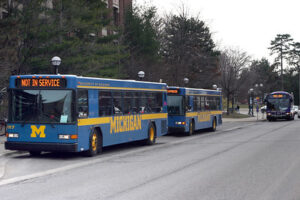You may remember the plight of Eastern Gateway Community College in Steubenville, OH. EGCC was a small, rural community college near Youngstown, OH, until it struck an agreement with AFSCME to provide the union’s members with a free college benefit. In doing so, EGCC attracted the (mostly negative) attention of the Department of Education and the Higher Learning Commission.
Earlier this year, the Department of Education ordered EGCC to stop offering the program and provide a teach-out plan for the tens of thousands of enrolled students. The Department of Education had alleged that the program survived solely on the Pell Grant benefits of Pell-eligible students, and that EGCC had simply waived the tuition costs for Pell ineligible students.
EGCC sued the Department of Education, claiming that ED had imposed sanctions on the school before giving it a chance to respond to the allegations. Despite receiving an injunction against ED’s actions, ED placed the school on a heightened fiscal monitoring status, which required the school to pay eligible students’ federal aid from its own resources, and then seek reimbursement. EGCC charged that ED was “slow-walking” its reimbursement requests which placed the school in a precarious financial position.
After all that, EGCC has announced that it has withdrawn its lawsuit against the Department of Education because it has reached a tentative settlement in the case. ED has not confirmed this, but according to EGCC, the agreement will allow the school to continue offering the “wildly popular” Free College Benefit program to its students around the nation.
Free College program shouldn’t be a model for others
What I find most mysterious about the Free College Benefit program is its popularity. When you look at the various free community college programs, including Michigan’s own “Reconnect” program, they offer essentially the same educational opportunity as EGCC’s FCB program. Yet these programs are not nearly as well attended as the EGCC purports to be. Nor are the students as persistent as those in EGCC’s program.
According to EGCC, in 2021, the school delivered 864,412 credit hours of instruction. It also reported that it has 13,239 full-time students. Full-time students would have accounted for 397,180 of EGCC’s credit hours, assuming that “full-time” means they took 30 credit hours during the school year. The remaining 44,434 part time students took an average of 10.5 credit hours during the school year, or about 5-6 credits per semester.
Of the students who started in 2018 (693), EGCC reported that 137 finished on time in two years. Similarly, among the part-time cohort of 2018, EGCC reported that 214 graduated within three years. That gave EGCC a graduation rate of 32% and transfer-out rate of 12%, as of 2021.
That’s not a magical rate for a school that enrolled more than 57,000 students. EGCC’s program still has plenty of problems to sort out for the HLC, but it doesn’t appear to be the model to follow for community colleges that aspire to vastly expand their online education offerings.
Photo Credit: The LEAF Project, via Flickr




















